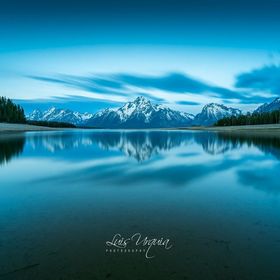Three linked fun jumpers right before breaking away from each other. Jumping from Skydive Miami from an altitude of 13,500 feet....
Read more
Three linked fun jumpers right before breaking away from each other. Jumping from Skydive Miami from an altitude of 13,500 feet.
Read less
Read less
Views
1511
Likes
Awards
Contest Finalist in Sports In Action Photo Contest
Peer Award
Top Choice
Magnificent Capture
Outstanding Creativity
Superior Skill
All Star
Absolute Masterpiece
Superb Composition
Top Ranks
Categories
Same photographer See allBehind The Lens
Discover more photos See all
Behind The Lens
Location
I took this picture while on a Fun Jump at Skydive Miami out of Homestead, Florida. It is recommended by the United States Parachute Association to not use/ wear camera gear while skydiving until a jumper has reached no less than 200 jumps of experience.Time
This picture was taken shortly after the sun had risen. Since we use our arms and legs to control our bodies positions during freefall we must wear our camera gear mostly on our helmet and the shutter release will be done by a tongue switch connected to the camera. Depending on your type of relative body position to earth, gravity on what we call vertical flying can produce speeds upwards of 160 MPH. The best shots will normally come when the light is at my back and it is casting at my subjects. All of the freefall shots in freeflying occur within a 45 second window. To get more shots you must pack your parachute, climb to altitude and jump again.Lighting
I have found in skydiving that most of my best shots will come as in landscape photography recommendation when the light is close to the horizon, with the sun behind me and the light casting at my subject. Both direct and side light are welcome. Good amount of light is pretty much needed in order to be able to use the higher shutter speeds needed to stop the action and obtain the razor sharp images we all seem to love so much. Many of my most interesting shots (with a twist) will have the sun directly behind the subject in many cases and will even cause lens flare which is not a bad thing to have on some of these types of photos at all!Equipment
On this shot I used a GoPro Hero 3 plus Black. It is mounted on a carbon fiber helmet which has a cutaway device in case of a parachute line entanglement emergency. This cutaway device will when activated release the chin strap and the helmet will hopefully be removed from your body by the force of the parachute lines pulling on it. It is not uncommon to use a DSLR and a GoPro mounted on the helmet at the same time. One for stills and the other one for video content. In this case I set the Gopro to take three frames of the highest resolution possible per second. It will run non stop until I have safely landed on the ground. On an average jump this method of photography can yield over 200 photos of potential good quality in a single parachute jump. Out of those 200 I will normally end up using about five. The rest are deleted.Inspiration
When I first started training in the discipline of skydiving the progression takes you through steps which eventually inspired me to start taking recordings of the jump runs. At first I took videos, but I soon realized that videos required viewers to spend larger amounts of their time viewing them than stills. My passion as a landscape photographer made it a simple answer for me as to what I needed to do next in skydiving. So, as soon as I was able with the experience required I started investing in gear that I knew would yield high quality skydive photos. On occasion I will use my Canon 60D with a tongue switch to get the highest quality photos I can take. For the most part, the lighter Gopro while set to take stills now happens to be my safest route.Editing
Yes, I use Lightroom to help with making the photos pop. The Gopro Hero 3 plus Black I have has a RAW setting they call ProTune. It will give me a raw file which gives me more freedom to move the sliders around. I normally try not to over do it and I make sure to keep noise from creating a problem while post processing. I have found with experience to try not to over process my photos.In my camera bag
Very simple, as far as photo capturing equipment, all I bring is a Gopro case with extra batteries and lens wipes. If I want to use my DSLR, I will bring it too along with extra batteries. My helmet where my cameras are mounted as stated earlier has been retrofitted with a cutaway device.Feedback
First, need to get licensed as a skydiver. Next, get a minimum of 200 jumps (if you are planning to stay safe). Slowly progress, make sure you can control your body in free fall flight at all times, then start slowly adding your photography equipment to your skydiving equipment. Above all remember to use safety as your number one priority. Go up, jump, photograph and have fun!













































